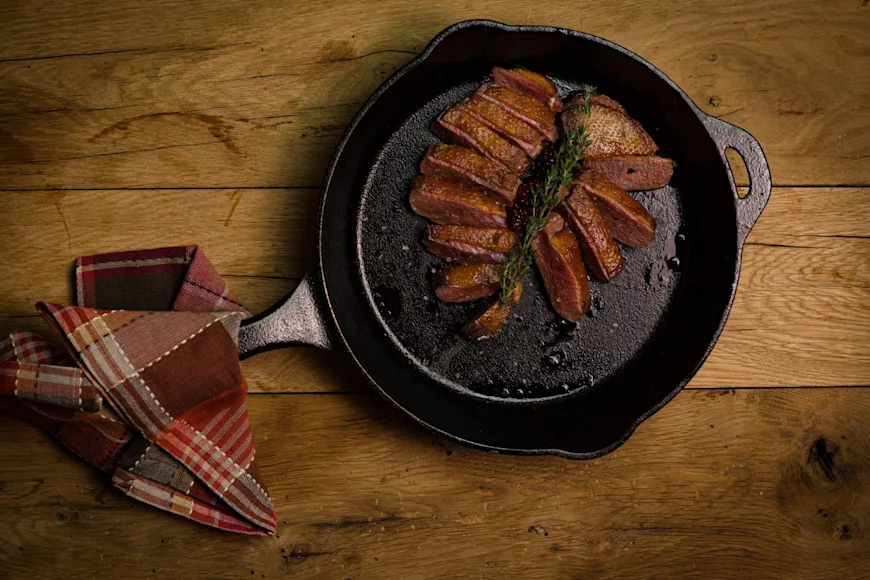For something so small and simple, a wild duck breast is too often tragically disrespected on plates at duck camps and around the family dinner table. Words such as “greasy” and “tough” or descriptions like “tastes like liver” are often used. This is a shame. Because a wild duck breast can be one the most amazing and most flavorful pieces of wild game a hunter can serve up. Here, we will discuss some cooking tips and duck breast recipe ideas to help you make the most out of every duck breast you bring home.
4 Quick and Easy Duck Breast Recipe Ideas
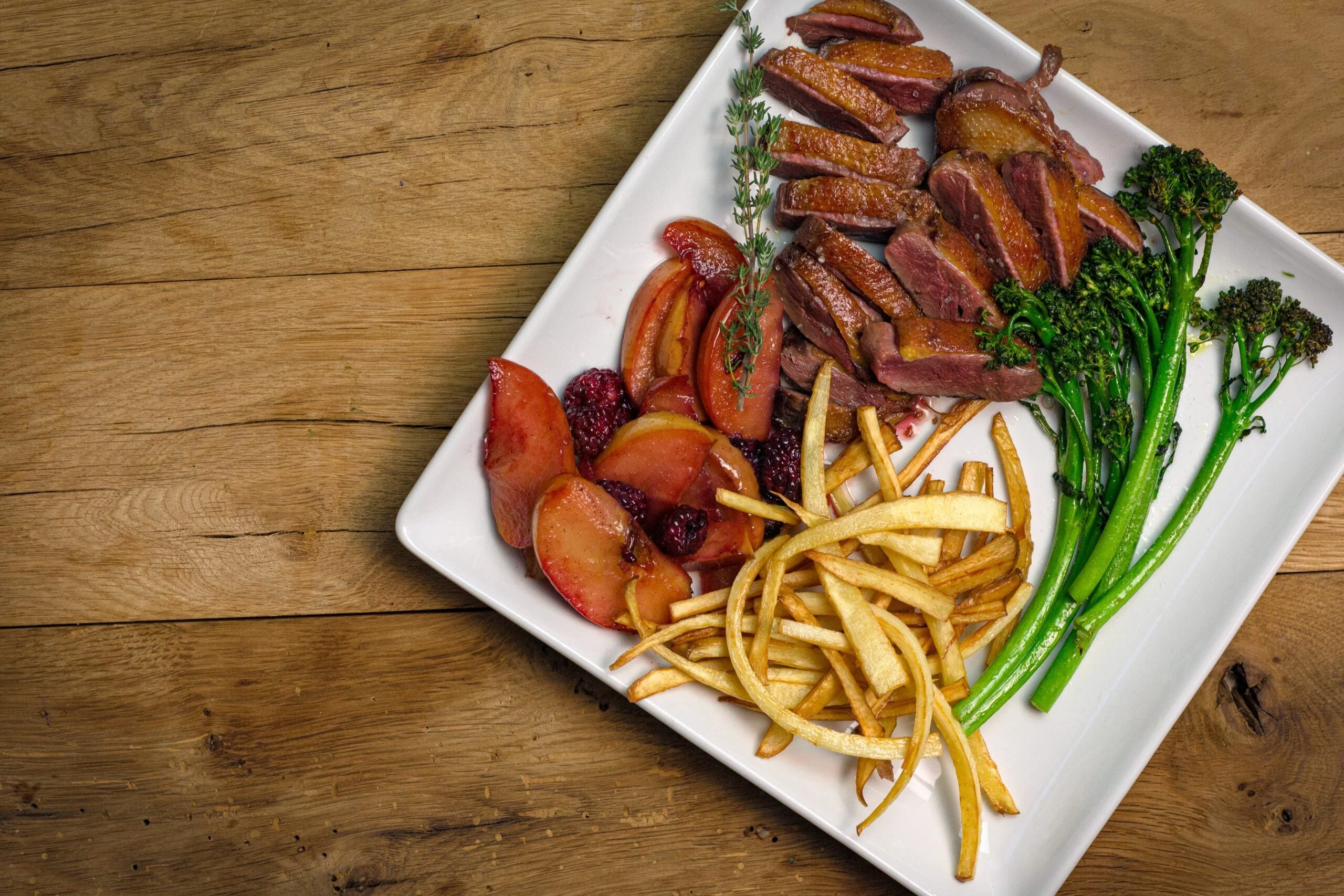
Fried fresh fruit, grilled baby broccoli and parsnip fries make for great side for medium-rare duck breast. Jack Hennessy
Duck Breast Recipe 1: The Cold-Skillet Method
Cooking Directions:
Fully thaw the breasts and lightly salt and pepper both sides. Leave them out at room temperature for a couple hours.
Starting with a cold pan or skillet, place the breasts skin-side down and turn burner heat to medium-high. Use a grill weight to make sure the breasts stay in contact with cooking surface and don’t curl up. Once the skin is brown and crisp, flip, cook other side for 2-3 minutes then pull. Allow to rest uncovered for 5 minutes before carving.
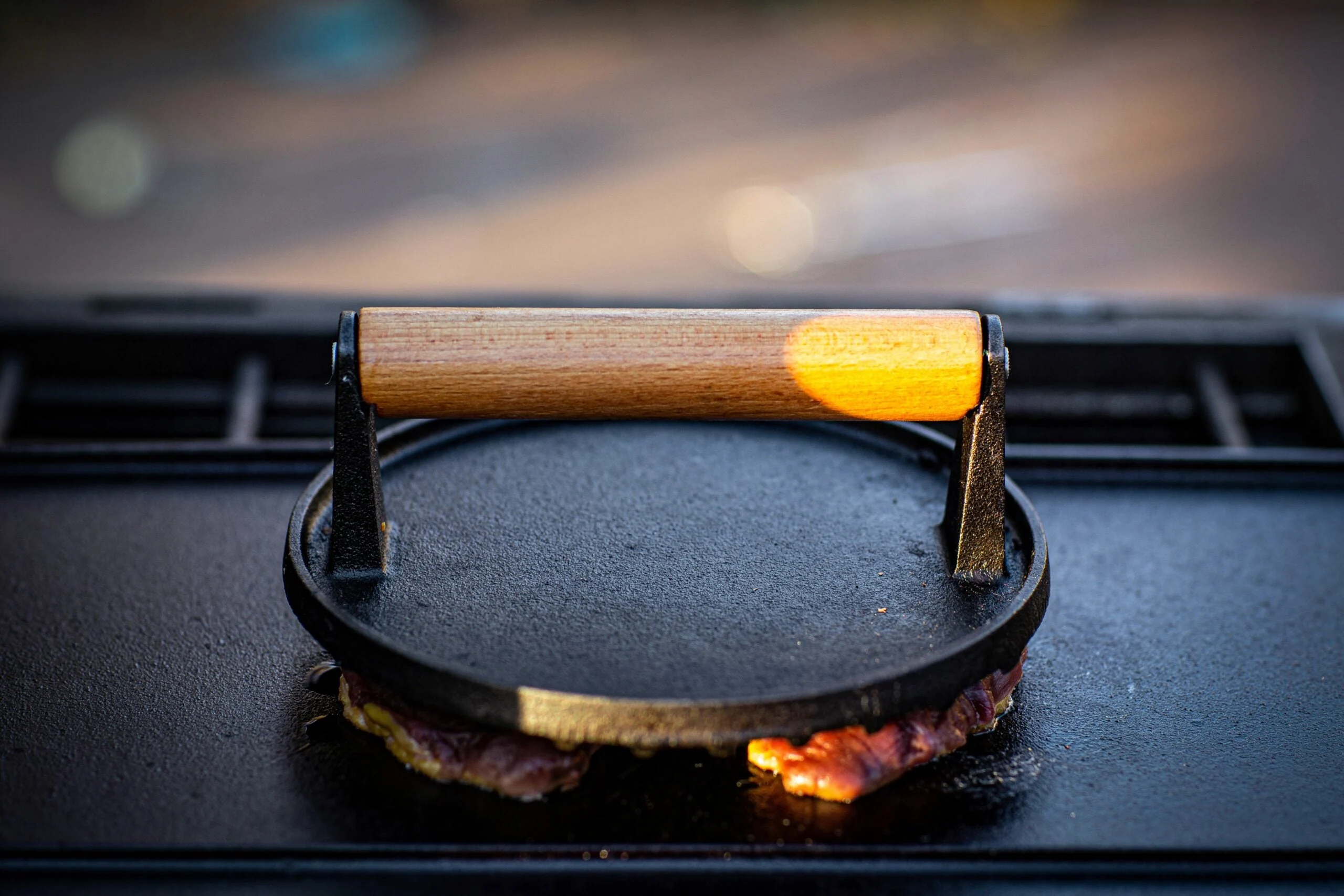
A grill weight helps ensure a great sear and that breasts don’t curl up while cooking. Jack Hennessy
Duck Breast Recipe 2: Sous Vide Cooked and Reverse Seared
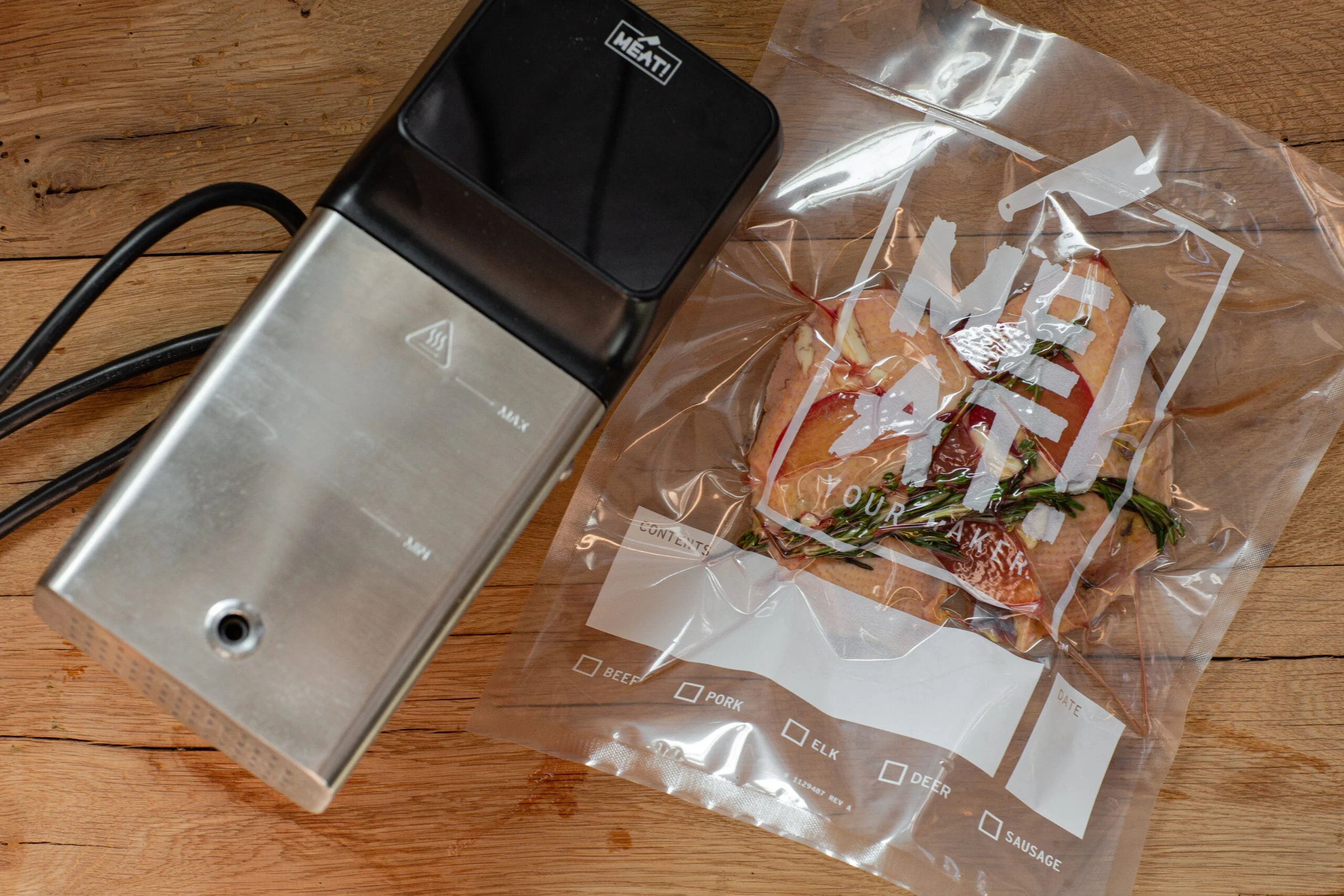
Using a sous vide is a method to ensure both a precise cook and that the duck breasts get to stew in their own rendered fat a bit prior to searing. Jack Hennessy
the duck breasts with sliced apples, smashed garlic cloves, a sprig of rosemary, and a big glug of white wine.
Use a sous vide device to cook the breasts at 110 degrees F for a half hour.
Pull and pat the ducks breasts dry. Next, sear each side of the duck breast at 600 degrees F for 1 minute. Remove and allow to rest uncovered for 5 minutes prior to carving and serving.
Duck Breast Recipe 3: Stir-Fry
Cooking Directions
Slice either skinless or plucked breasts horizontally, against the grain, into half-inch-wide slices. Either season or soak the breasts in your favorite stir-fry marinade for an hour.
In a large skillet or wok, add a thin layer of peanut oil and set burner to high heat. Toss in your favorite sliced vegetables and sear. Once seared, remove vegetables and set aside.
Add the sliced duck to skillet or wok, burner still on high heat, and get a nice sear on all of the pieces. Remove from heat. Combine the duck with the vegetables and serve over jasmine rice.
Duck Breast Recipe 4: The Duck Burger
Cooking Directions
Using either skinless or plucked duck breasts, cut them into chunks and grind. Form the ground meat into 6-ounce burger patties.
Lightly salt and pepper both sides of the patties and place in the refridgerator to cool.
When ready to cook, heat a cast-iron skillet or flat-top to 600 degrees F. Cook each side of the burger for 2 minutes. Allow to rest for 5 minutes prior to serving. Add your favorite toppings to the burger.
Good-Tasting Ducks vs Bad-Tasting Ducks
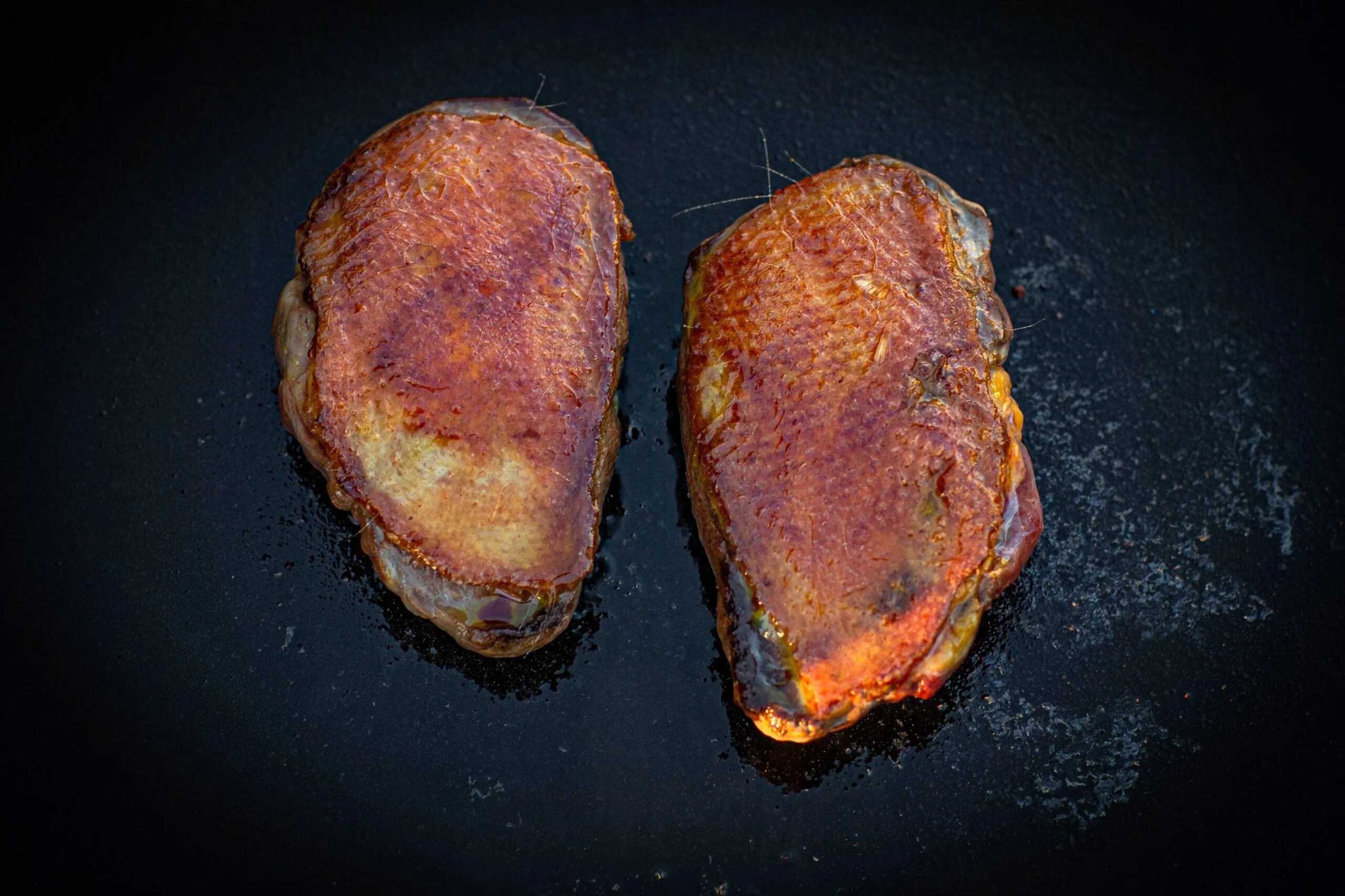
A pair of duck breast with perfectly cooked, crispy, golden skin. Jack Hennessy
It is worth noting that, yes, some ducks do taste better than others—and that is the result of their diet. Your sea ducks, divers, and mergansers—the ones that feast on seaweed, fish, snails, clams, and other invertebrates under the water—don’t typically taste as great as a mallard that might mostly feed on plants and seeds, perhaps some grains and the occasional earthworm.
Because an animal’s diet is apparent in its fat—and that fat is a large part of flavor—I recommend skinning any divers, sea ducks, or mergansers. From there, you can work with various brines to try to neutralize scuzzy-pond flavor tones, or cover with a sauce or spices, perhaps even grind and turn into a burger mixed with bacon fat. You more or less want to disguise the adverse taste of these species.
The Benefit of Plucking Ducks
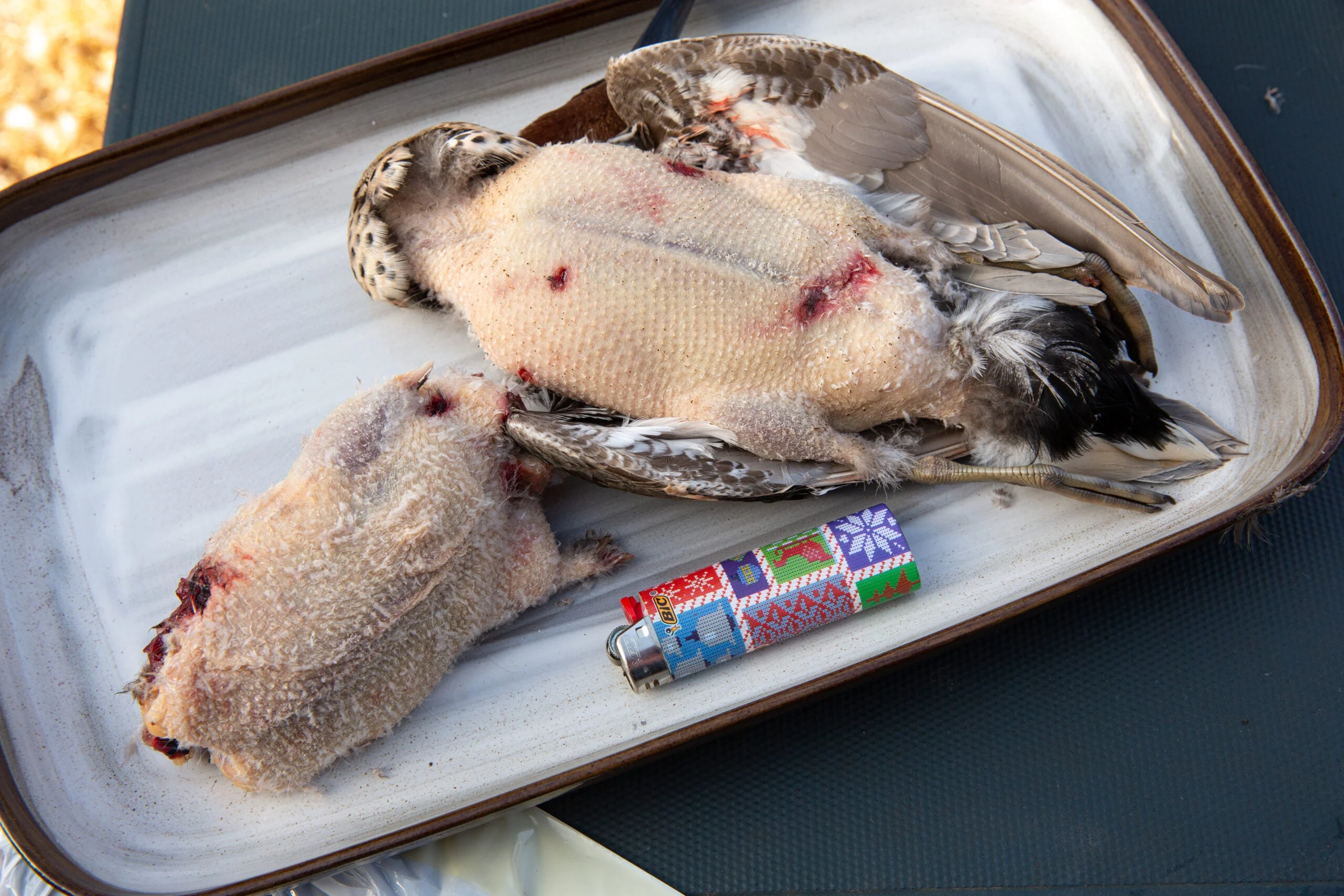
A simple Bic lighter works great for singing off errant hairs and small feathers. Jack Hennessy
Fat rendered from duck skin is liquid gold. Put another way: Duck skin is the bacon of the waterfowl world. Always make sure to take 5 extra minutes to pluck the breasts before carving them out. Seriously, it only takes 5 minutes. Take clumps of feathers between your index finger and thumb and start swiping up toward the neck, against the grain of the feathers. Continue to pluck up and down until the breast is featherless, then pluck farther along each side than you think you have to. Once you cut out the breasts, more feathers than you expect will still cling to skin. To remove them, pick them off as best you can, then take a Bic lighter to the hairs to singe and you’re ready to cook or store.
You can also save plucked skin from other parts of the duck you would not eat (e.g., the back or even the tail). Cut these bits of skin into approximate inch-by-inch pieces and place in a skillet, cover with water, and bring to a boil. Lower to a simmer once boiling and once you see clear, greasy-like liquids in the skillet (preceded by a phase of milky-white liquids), you are done. Strain through a paper-towel-lined sieve and you got yourself duck butter (i.e., rendered duck fat). You can use this as you would beef tallow or even lard; it’s a legitimate ingredient for baking or rubbing over a venison backstrap prior to grilling.
FAQs
What is the best way to cook a duck breast?
Same as you would a good steak: medium-rare. So, start with a simple dusting of kosher salt and freshly cracked black pepper over both sides, cooked skin-down on a cold skillet until brown and crispy, flip, sear for good crust on underside, allow to rest for 5 minutes, serve medium-rare.
What do you eat with duck breasts?
I advocate for some sort of grilled fresh fruit or a sauce made from fresh fruit, perhaps even some fried apples. Grilled and buttery fennel is also fantastic, as well as slicing parsnips thin, to the size of McDonald’s French fries, then frying those at 375 F then lightly salt and serving as if they were indeed French fries (albeit slightly healthier). Grilled carrots and baby broccoli also goes great with duck—basically anything with vibrant colors or no color at all (like fennel and parsnip).
How do you make duck taste good?
Keep the skin on and make sure you are cooking in such a way to make used of the fat rendering. For the same reason you wouldn’t grill bacon over a fire, you don’t want to grill a skin-on duck breasts over an open grate, as fat will drip down and be lost. Brine ahead of time if need be, to both remove residual blood and infuse muscle fibers with salt, which will help retain moisture when cooking. Make sure to rinse off a wet brine if that is your method. Most importantly, don’t overcook. The flavor potential of a duck breast goes down exponentially for every degree past 135 degrees F.
Why is my duck so tough?
It’s likely overcooked; however, the process of resting or aging ducks is a great option to denature muscles ahead of cooking or freezing. Some of these wild ducks can be upwards of 7 years or older, versus the chickens you buy at the store that were 7-9 weeks old when slaughtered. A wild duck’s muscles are going to be far more developed than domestic bird meat. Hanging or resting their meat at 36-40 F temps for a week will cause naturally occurring enzymes to break down muscle fibers and tenderize meat. You can hang a whole duck as large as a mallard whole if temps stay between 34 and 40 F; or you can keep whole or breast out and keep in your fridge for 5-7 days.

